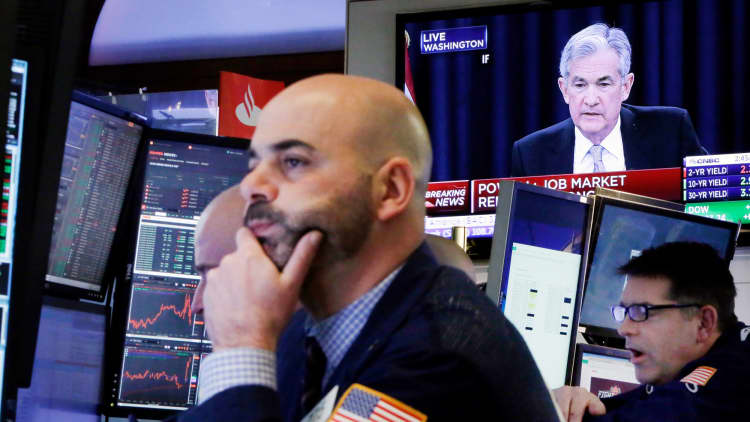
Short-term Treasury rates fell from multiyear highs on Thursday after European Central Bank President Mario Draghi criticized plans by certain member countries to increase borrowing limits, sending Italian and Spanish yields up sharply.
Relatively safer bonds, such as German bunds and U.S. Treasurys, caught a safety bid as equities in Europe and on Wall Street extended losses. U.S. yields initially rose Thursday after the Federal Reserve's latest meeting minutes showed members were confident in the current path of interest rate hikes and wary of frothiness in financial markets.
The U.S. two-year Treasury yield hit a high of 2.907 percent, its highest level since June 25, 2008, before falling to 2.878 percent.
Minutes of the Fed's meeting released Wednesday showed officials talking over plans for more rate hikes, with some saying there could be a time when the central bank should exceed a neutral level in favor of more restrictive policy. Restrictive interest rates would likely be used to clamp down on inflation overshooting the Fed's target and to address "the risk posed by significant financial imbalances."
The yield on the benchmark 10-year Treasury note was higher at around 3.18 percent, about 3 basis points below highs not seen since 2011. The yield on the 30-year Treasury bond bond was higher at 3.369 percent. Bond yields move inversely to prices.
Treasurys
Bond investors have underscored robust economic data, moderate inflation and a glut of debt issuance as reasons for the rising rates in recent weeks. Recent jobs reports, for example, suggest that the labor market is near or beyond full employment and show that average hourly earnings are starting to trend higher.
That could be a worry for the Fed in its attempts to keep inflation under control. The central bank announced its third quarter-point increase to the federal funds rate in September. Fed Chair Jerome Powell's comments earlier in the month that the federal funds rate remains "a long way from neutral" and could be lifted to restrictive levels sparked a bout of volatility in the markets.
"I look at the Fed's minutes and see nothing but hawkish things. This is not a Fed that's going to slow down in any way," said Tom di Galoma, head of Treasury trading at Seaport Global Holdings.
"The Fed is continually worried that the economy is going to overheat and that's probably one of the biggest issues. ... I also think the Fed's trying to get rates higher in case of a possible slowdown in the next few years so they can reaction with monetary policy," he added.
The bond trader said he expects the Fed to hike rates "at least three more times," predicting rate adjustments in December 2018 as well as in March and June of 2019. Powell has overseen three rate hikes since taking over for predecessor Janet Yellen earlier this year.
New applications for unemployment benefits dropped in the previous week and the number of Americans on jobless rolls returned to levels not seen since 1973, the Labor Department reported Thursday.
Initial claims for state unemployment benefits decreased 5,000 to a seasonally adjusted 210,000 for the week ended Oct. 13. Data for the prior week was revised to show 1,000 more applications received than previously reported. Claims fell to 202,000 during the week ended Sept. 15, the lowest level since November 1969.
The Philadelphia Fed found its business conditions index for the mid-Atlantic region slipped to a reading of 22.2 in October from 22.9 in September thanks to a decline in new orders. Its survey reported higher employment at factories in the region, with more than 30 percent of responding firms saying they had increased payrolls.


